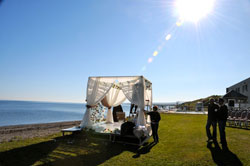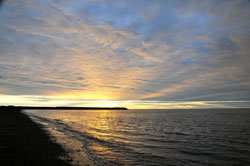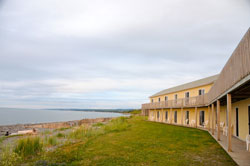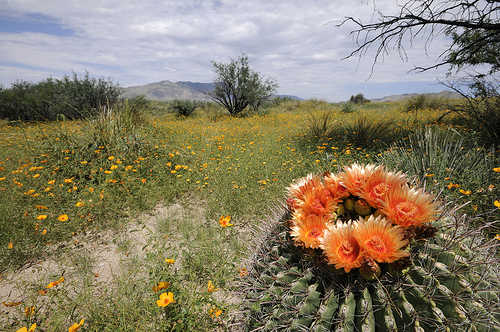When I was in my twenties, at a time when I was deeply involved with Krishna Consciousness, if I saw a beautiful sunset I would think, “This is maya , illusion.” Or if my mood was more devotional, I might think, “This sunset is the smiling face of Krishna.” In either case the sunset could never be what it actually was, a beautiful display of light in the evening sky. My reaction would be similar toward any object of beauty, mist rising over the mountains, a moonrise, a piece of art, some music, a dance, or a painting. All things were maya , illusion pulling me away from the source of all beauty, Krishna. Consequently, I tended to look at the world in negative terms. The beauty of the physical world was an evil; even my own body was an evil. In fact, before eating, the prayer I recited included these two sentences, “this body is a lump of ignorance…,” and “the senses are a network of paths leading to death… .” In our morning scripture classes I regularly heard such expressions as, “modern education is a slaughter house for the soul,” “women are nine times more lusty than men,” “never trust a karmi (non devotee),” and so on. In fact, these and dozens of other pat expressions were standard “mantras” that I heard on a regular basis. It was as if I was saint Jerome contemplating a skull. The world was an evil and I needed to be reminded of it at all times. There was only one beauty to be contemplated, Krishna. Consequently, my life was filled with the chanting of Krishna’s name, fasting, prayer and religious study. In effect I lived the life of an ascetic. This was my Krishna Consciousness, and in those days, I loved it! I was young and I had a taste for asceticism.
When the time for marriage arrived I was encouraged to maintain my ascetic view of life. Love created deep attachments and so it was an evil that bound a soul to this world. Sex was never to be enjoyed. It was only for procreation and even before engaging in relations, husband and wife were required to chant 50 rounds of the Krishna mantra (8 hours of chanting)! Hearing the name of God would offset the pleasure of relations was the reasoning. Television, radio, non devotee friends, restaurants, movies, vacations, celebration of birthdays and other holidays were all condemned. Such restrictions continued the “no” mindset, but what, in the context of a single student was advantageous, in married life was a complete disaster. You can imagine the effect such extreme views had on husband and wife relations and the raising of children. In those early days of married life I struggled to maintain my ascetic lifestyle. In fact, the two worlds could hardly be integrated and much of my early married life was spent coming to terms with this fact. In those days the Krishna Movement had no place for a meaningful married life. We only had the ideal of the celibate householder (brahmachari grihastha) to follow. As far as married life was concerned it was a position of guilt and shame.
Eventually my religious views changed. Mentally I had finished with the ascetic’s lifestyle. However, there seemed to be no reasonable alternative. I did not want to leave spiritual life or even my Vaishnava religious traditions, I just wanted to reconcile a religious life with a reasonable married life. To this end I traveled to India and asked many religious leaders, pandits and shastris, how they lived, how they raised their families, how they educated their children, how they held jobs; in other words, how they interacted with the world and yet maintained their religious traditions. I studied issues regarding the integration of tradition and modernity. I even wrote a book on the subject, “Hindu Encounter with Modernity.” Eventually I matured and reconciled myself to living the life of a householder and finally put to rest the struggles of my early spiritual life. Unfortunately my wife could not make the transition from asceticism to meaningful married life. From her perspective I was risking both our spiritual lives and where I was going was too much for her. In those days our Krishna movement had no place for a non ascetic married life, so in the end I left the “nest” of Krishna Consciousness and she stayed to follow her ascetic ways. Now I am living as a Hindu priest and teacher of modern Hinduism in the West and I am happy with my life and with what I do.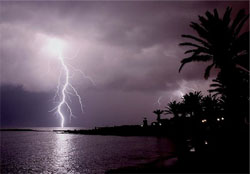
There was a time when I looked back on my asceticism and thought I must have been mad for subjecting myself to such an extreme lifestyle. Now that I have matured and have had time to reflect on my experiences I view this period of my life as the “boot camp” of my spiritual life. I could not be who I am today had there not been this ascetic training. As steel has to be heated and pounded in order to be shaped into something useful, so I needed the discipline and restrictions of this lifestyle to effect my transformation. This is why I refer to Krishna Consciousness as my “spiritual home.” And now that I have left this home, there is no need to return, yet still I offer it my respect as a son honors his father and mother. But not all of my God brothers and sisters have felt the need to leave. Many remain and they are happy. Others tried to leave, but fell to the wayside. Indeed, there is a substantial apostasy rate within Krishna Consciousness. Over the years things have gradually changed within the Krishna movement and better support is now provided to its members in this regard, but in my day there was no support for member in transition to a different lifestyle. The world was black or white. We were on our own to find our way and if one wanted to leave they were shunned and made to become a spiritual refugee. You had no spiritual home and many devotees faced terrible struggles including depression and even suicide as they faced the issue of staying or leaving the movement. In my wife’s case she could not leave. She could not see a spiritual existence for herself outside of her home. I credit my university studies for both creating my desire to leave as well as for giving me the ability to see beyond my religious home and to see a future for myself in the greater religious world.
I occasionally meet God-brothers and sisters, members of Krishna Consciousness who did not leave, or I meet religious leaders from other Hindu organizations, devotees who live within a similar religious home. I see that my religious perspective is now very different from most of them. Something fundamental was changed. They continue to follow the ascetic’s perspective—some degree of Saint Jerome—whereas I do not. Usually their lifestyle is not as extreme as my religious upbringing was, for even Krishna Consciousness has tempered its ways since my early days of involvement, yet asceticism still forms the foundations of their religious perspective. Devotees are still asked to renounce the world and adopt some form of an ascetic’s lifestyle. This is the way it always has been and will continue to be.
Reflecting on the matter today, I agree that asceticism should form the basis of a religious foundation. Indeed, renunciation and penance are a good training for a beginner, particularly an unmarried student. No doubt, I found great joy and spiritual “high” in my practice of asceticism, but, like most things there is another side to the “spiritual coin”. If the ideal of a Saint Jerome is posited as the complete spiritual journey then the religious path is incomplete and extreme. Indeed, my spiritual development has taken me down the path of asceticism, but it has not ended there. There is another phase.
Hinduism itself recognizes more than one side of the spiritual path. In the image of Shiva and Parvati, Shiva, dressed in a tiger skin with snakes and covered head to toe in crematory ash, is the quintessential ascetic. He is the God of Saint Jerome, yet his consort, Parvati, seated beside Him is dressed in silks and jewelry. She is the exact opposite of her male counterpart. She is the embodiment of beauty and sensuality. Such a combined image speaks to both the “no” and the “yes” of life, and it suggests that asceticism and sensuality are inseparably related. And this is precisely how my religious path has unfolded since my spiritual beginnings. The progress has been gradual, but steady. I have moved from saying no to saying yes to life, from asceticism to, not exactly sensuality, but to aesthetics. The sunset, which years ago was simply an illusion, has become what it actually is, a beautiful display of light in the evening sky. My focus is now towards engagement in life instead of running away from it. My worship is more towards the feminine form of God than the male. This is not to say I have blinded myself to ignorance and suffering, and to the pains of the world, it is just that my focus has changed. I no longer live just to avoid pain; I live to grow, and dare I say it, to enjoy. My life has become an exploration instead of a shunning. But neither am I speaking of hedonism, or of excess or even of atheism. I am speaking of the acceptance of life as it is, with all its beauty and with all its pains, as one might accept a rose knowing fully well of its thorns.
Of course, when one says yes to the universe, when one decides to become engaged in life, when you hurl yourself into causes and relationships, not only do you open yourself to endless possibilities, you also open yourself to suffering. You make yourself vulnerable. As you violate the rules of asceticism you take on risks. So why would someone who has “held the skull,” who has understood the transitory nature of life, who has gone through the rigors of asceticism, come to the point of saying yes to life with all its potential for pain? The answer is simple. For me asceticism became a negative state of existence that failed to satisfy the yearnings of my soul and ultimately was even stunting my spiritual growth. At some point I could no longer live just saying no to the universe; I no longer wanted to defend myself from the beckoning of life. I chose to view life as a positive state of being, something that should not be indefinitely thwarted. I now look at asceticism as a stage of spiritual development that one must pass through; it is not a stage to become fixed in. Unfortunately a religious tradition that stresses this negative stage of spiritual life and asks its followers to become fixed in this stage of “no,” opens the door to frustration, unhappiness and spiritual stagnation. The theory that says, “by shutting down the senses and curtailing interaction with the physical world and thereby sacrificing finite pleasure, one can open oneself to eternal spiritual joy” is incomplete. Such joy is idealized and theoretical. The inescapable fact is that we live as finite beings in a finite world and fulfillment comes from real commitments and relationships made within this finite world. The idealized and theoretical joys promised in spiritual life only come to us though our finite existence. Becoming dead to this world only makes you dead to yourself. I have come to realize after years of practice if one wants to experience the Divine, one can experience a glimpse of it in the relationships and things of this world, not by shutting off this world. By allowing the finite to act as a conduit for the infinite one opens a “window” into divine reality. The beauty in the sunset that I refused to see years ago, or the mist rising in the mountains that I used to avoid seeing is the divine if we have the eyes to see. This is the what the Kenopanishad is referring to as it says, “The flash of lightning that causes one to blink and say, “Ah!” That “Ah” is the appearance of Divinity.” In other words, when one sees a display of beauty in this world, whether it be a manifestation of the natural world, lighting in the night, a sunset, a moonrise over the mountains, or even dance, art or architecture, if that manifestation of beauty creates a state of “Ah,” in other words, if it evokes a state of aesthetic arrest, that state, that moment of “ah” is an experience of divinity. At that moment of wonder we are having an interaction with divinity. This is the aesthetic phase of spiritual life to which I have entered.

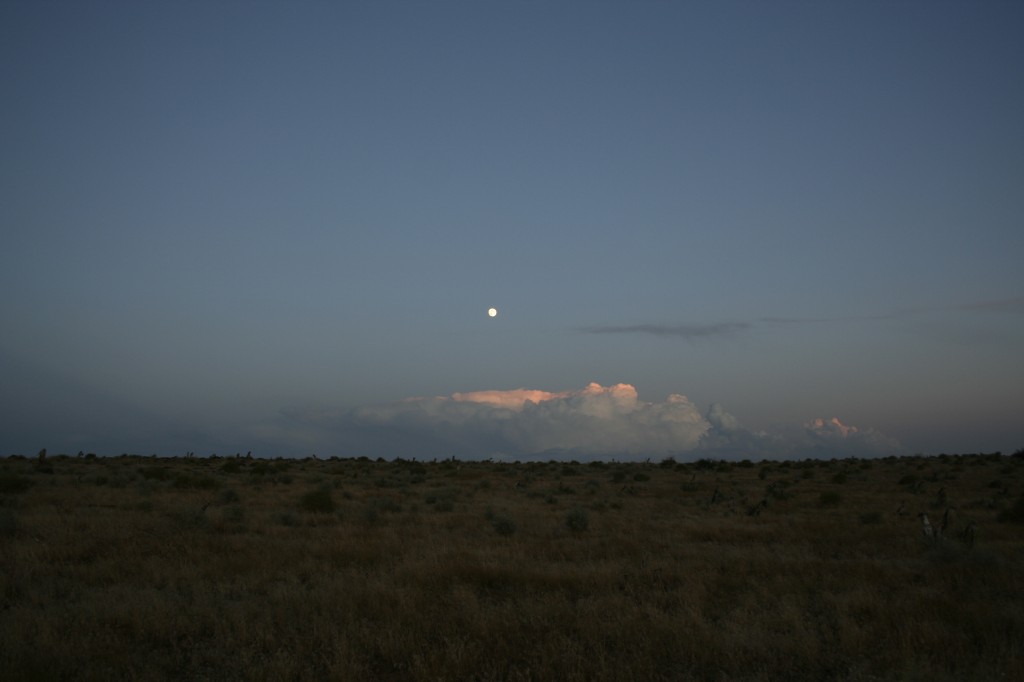
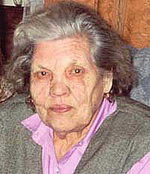

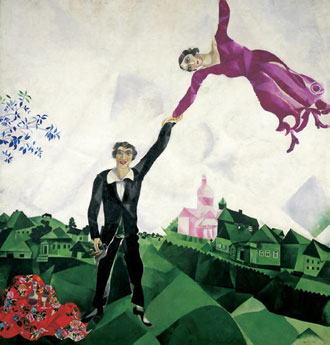
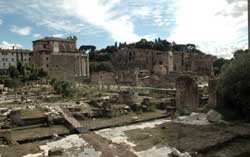
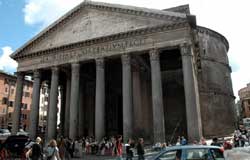
 world trade centers was destroyed by Islamic terrorists. Understandably, this has become an issue of contention in this country to the point where even the president has spoken out on the matter and given his opinion that Muslims are protected by constitutional rights that guarantee religious freedom like any other religion. While I heartily agree that Muslims should be treated in the same way as other religions, and they do have the right to purchase property and establish religious institutions in accordance with local laws, the feelings of the local community and the mood of the country must be taken into consideration. Even though the Muslim community has the right to have an Islamic community center, their attempt is in discord with the mood of the country. While this may be unfortunate for the Islamic community in America not to have its community center and mosque in this location, the current situation affords a huge opportunity for Muslim Americans to promote their religion not only in America, but throughout the Western world. There is now a golden opportunity for the leaders of the Muslim community to face the nation and say, “We know our religious freedoms are protected under the United Sates constitution and we know we have the right to build this Islamic center and mosque, however, given the unique circumstances surrounding the events of 9/11 and the feelings of the local community and the nation as a whole, we have decided not to locate our center in this location at this time.” If the members of the Islamic community took this approach they would score a public relations victory and engender a huge amount of goodwill from the American public. This would be Islam showing a new face not only in America, but to the world.
world trade centers was destroyed by Islamic terrorists. Understandably, this has become an issue of contention in this country to the point where even the president has spoken out on the matter and given his opinion that Muslims are protected by constitutional rights that guarantee religious freedom like any other religion. While I heartily agree that Muslims should be treated in the same way as other religions, and they do have the right to purchase property and establish religious institutions in accordance with local laws, the feelings of the local community and the mood of the country must be taken into consideration. Even though the Muslim community has the right to have an Islamic community center, their attempt is in discord with the mood of the country. While this may be unfortunate for the Islamic community in America not to have its community center and mosque in this location, the current situation affords a huge opportunity for Muslim Americans to promote their religion not only in America, but throughout the Western world. There is now a golden opportunity for the leaders of the Muslim community to face the nation and say, “We know our religious freedoms are protected under the United Sates constitution and we know we have the right to build this Islamic center and mosque, however, given the unique circumstances surrounding the events of 9/11 and the feelings of the local community and the nation as a whole, we have decided not to locate our center in this location at this time.” If the members of the Islamic community took this approach they would score a public relations victory and engender a huge amount of goodwill from the American public. This would be Islam showing a new face not only in America, but to the world.